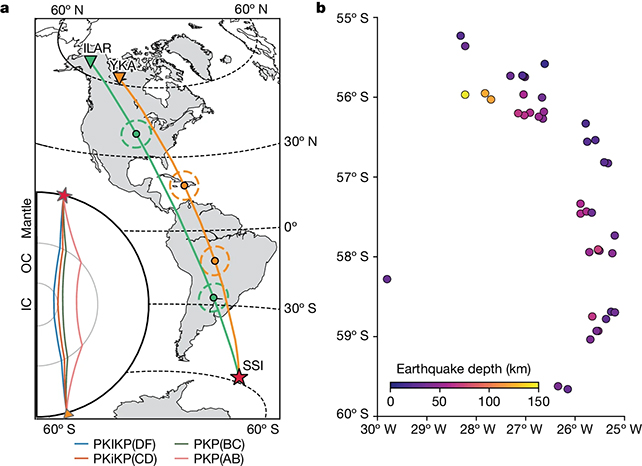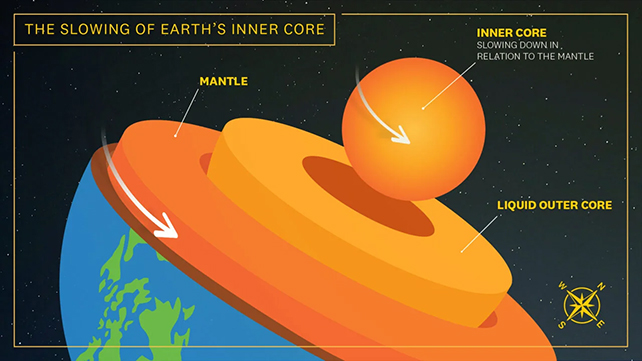ARTICLE AD
The rotation of Earth's inner core really has slowed down, a new study has confirmed, opening up questions about what's happening in the center of the planet and how we might be affected.
Led by a team from the University of Southern California (USC), the researchers behind the finding think this change in the core's rotation could change the length of our days – albeit only by a few fractions of a second, so you won't need to reset your watches just yet.
"When I first saw the seismograms that hinted at this change, I was stumped," says Earth scientist John Vidale from USC. "But when we found two dozen more observations signaling the same pattern, the result was inescapable.
"The inner core had slowed down for the first time in many decades. Other scientists have recently argued for similar and different models, but our latest study provides the most convincing resolution."
 Researchers tracked seismic wave activity across the globe. (Wang et al., Nature, 2024)
Researchers tracked seismic wave activity across the globe. (Wang et al., Nature, 2024)The inner core is a super-hot, super-dense ball of iron and nickel that is thought to be about two-thirds the size of the Moon. Located more than 3,000 miles (or just over 4,800 kilometers) below our feet, it's far from an easy object to study, though learning about its features could teach us a lot about our planet's history.
In this study, Vidale and his colleagues analyzed readings from 121 repeating earthquakes recorded between 1991 and 2023 around the South Sandwich Islands in the South Atlantic. They also added in data from several nuclear tests. Each of these events caused significant reverberations through the planet.
 Graphic showing the different layers down to Earth's core. (USC)
Graphic showing the different layers down to Earth's core. (USC)By charting how those waves speed up, slow down, and interact, researchers can estimate the position and movement of the inner core. Its apparent backtracking in relation to the surface – which seems to have started around 2010 – may be due to the the constant motion of the liquid iron outer core generating Earth's magnetic field, the team suggests, or the pull of gravitational forces.
As for what this means: we don't really know. Changes in speed, reversals, and wobbles in the inner core are not uncommon, so there's no indication that we're going to get the kind of apocalyptic disaster we might see in a sci-fi movie. We might experience slight shifts in days and nights, but only very slight.
"[It would be] very hard to notice, on the order of a thousandth of a second, almost lost in the noise of the churning oceans and atmosphere," says Vidale.
What we can say for sure is that the study adds to our understanding of the mysteries of the geological deep – and the spin of the Earth's inner core is something scientists are going to continue to keep a very close watch on.
"The dance of the inner core might be even more lively than we know so far," says Vidale.
The research has been published in Nature.

 5 months ago
36
5 months ago
36 

